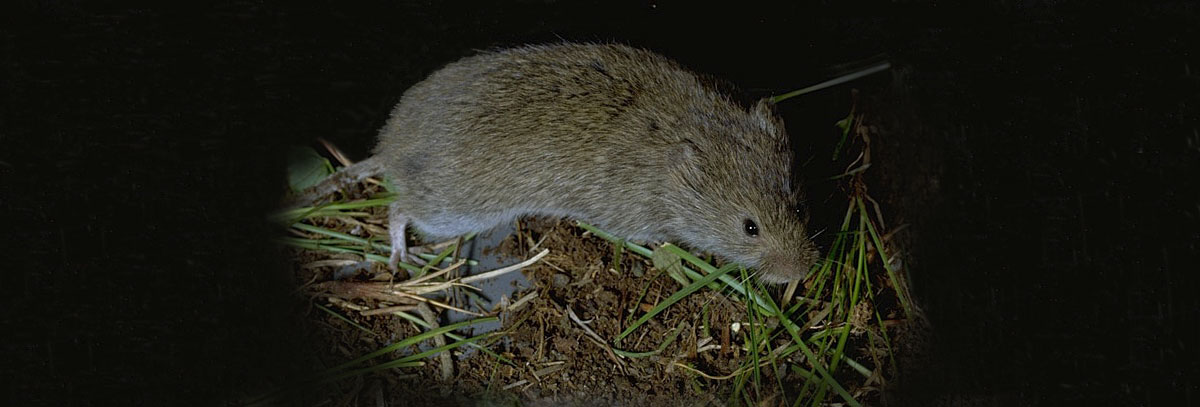
Photo: Roger Barbour
Learn more about voles in Illinois in OutdoorIllinois Journal:
Several species of voles are found in Illinois. Voles are small, stocky rodents approximately 4¼ to 7 inches in length and weighing 25 to 50 grams, depending on the species. They have grizzled brown to reddish-brown fur; short legs; and small, furred ears. They can be distinguished from mice by their stocky body shape and their short tails (typically less than one-third of the length of the body). Meadow voles and woodland voles are the species most likely to cause problems in Illinois.
Prairie and woodland voles are common throughout Illinois. The meadow vole is common in the northern two-thirds of the state.
Voles build shallow, underground burrow systems with many entrances. Meadow voles and prairie voles will create surface runways (small trail systems) through the grass, while woodland voles build surface runways just under the leaf litter. Vole runways are approximately one to two inches wide, and nearby vegetation is often clipped to the ground.
The stems of clipped vegetation are cut cleanly on a 45-degree angle. Meadow voles sometimes build a nest of grass above ground, whereas the other species build nests below ground.
Voles do not often come into contact with people and are not considered a public health threat.
Meadow voles inhabit grasslands in low-lying areas or near stream, lakes, or swamps. Prairie voles live in upland grasslands, fallow fields, and fencerows and typically avoid wooded areas. Woodland voles inhabit deciduous forests and grassy areas near woody areas.
Voles are herbivores (eat plants). They feed heavily on grasses, sedges, alfalfa, goldenrod, clover, and plantain. They will also eat grains, seeds, berries, bulbs, and occasionally insects or snails. When other foods are limited, voles will eat bark from the base of trees and shrubs. This behavior often occurs during the winter in Illinois.
Female voles can have several litters during a year. Meadow and prairie voles have an average of three to five young per litter. Woodland voles average two to three young per litter. Females can begin breeding at three weeks of age.
Voles have a very short lifespan, most living less than one year. They are a major food source for foxes, hawks, snakes, and many other predators of small mammals.
Voles are more often a problem in agricultural fields and orchards than in the urban landscape. Young orchard trees are particularly susceptible to vole damage during the winter, when voles feed on bark and tree roots. Voles can kill trees if they girdle them or cause extensive root damage.
Voles can become a problem for homeowners if they severely damage garden or landscaping plants. Voles may feed on bulbs, tubers, and corms, especially during the winter. Because voles often use the tunnel systems of moles, moles are sometimes blamed for damage actually caused by voles.
Voles may clip grass and create surface runways in lawns under a layer of snow. The trail systems disappear quickly once the grass begins to grow in the spring and the lawn is not harmed.
Rabbits will also gnaw on bark, especially during the winter. To determine whether or not voles are causing observed damage, look for irregular gnaw marks and note their width. Voles gnaw on bark from various angles and make marks approximately 1/8 inch wide, 3/8 inch long, and 1/16 inch deep. Rabbit gnaw marks are wider and longer, and rabbits often clip off small branches at a 45-degree angle.
Habitat modification is the best way to control vole damage. Keeping grass mowed short will reduce food resources and cover, reducing vole numbers in the area. Mulch should be kept at least three inches away from the base of trees.
Small gardens, flower beds, or favorite plants can be protected from vole damage by using an underground barrier. Bury one-quarter inch or less mesh hardware cloth six to eight inches into the soil around the area you wish to protect.
Surrounding trees and shrubs with hardware cloth or a tree protector that has openings one-quarter inch or less can protect them. The protector must be flush with the ground so that the voles cannot squeeze in underneath.
Thiram applied to roots or tubers before planting may help protect plants from vole damage, but this strategy provides only short-term protection.
Zinc phosphide baits and anticoagulants (Chlorophacinone and Diphacinone) may be used to control voles in Illinois. The zinc phosphide baits should be placed in runways and burrow openings. The baits should not be broadcast, because they are potentially hazardous to ground-feeding birds. Toxicants may only be used by licensed pesticide applicators. Read and follow the instructions on the product label.
Mouse snap traps can be used to remove a small number of voles. However, due to voles’ reproductive capabilities, it is typically ineffective to trap them over a large area. The traps should be set perpendicular to the vole runway with the trigger end placed in the runway.
The Illinois Wildlife Code does not protect voles. They may be removed without a permit.
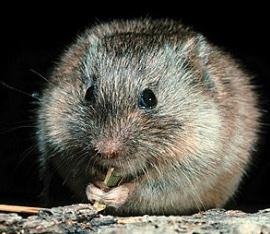
Photo: Michael Jeffords
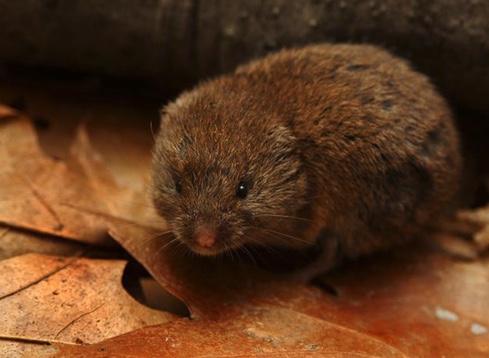
Photo: Public Domain
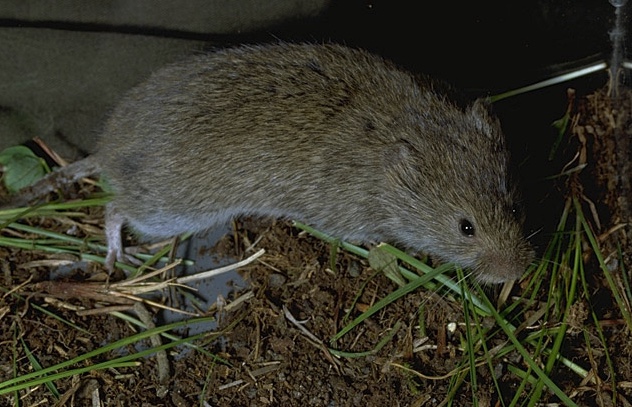
Photo: Roger Barbour
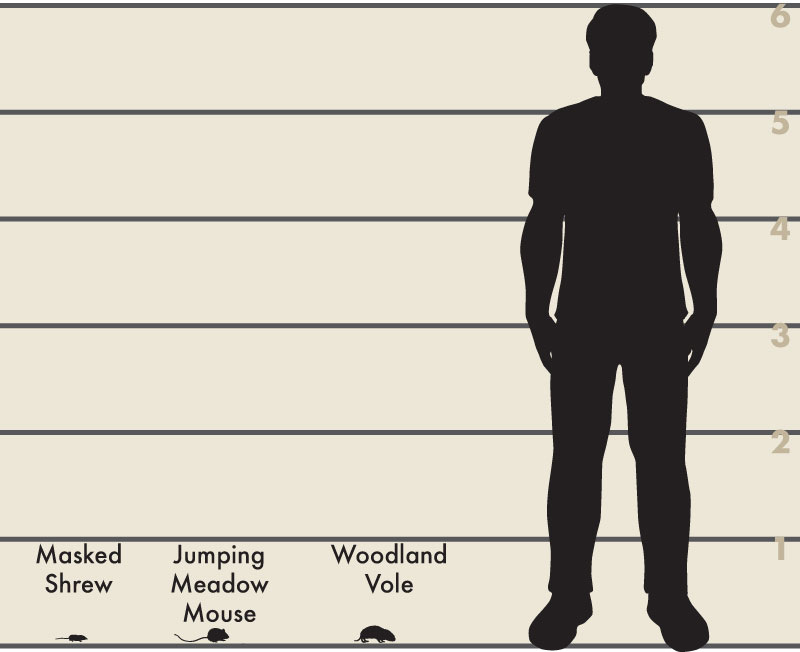
Illustrator: Lynn Smith
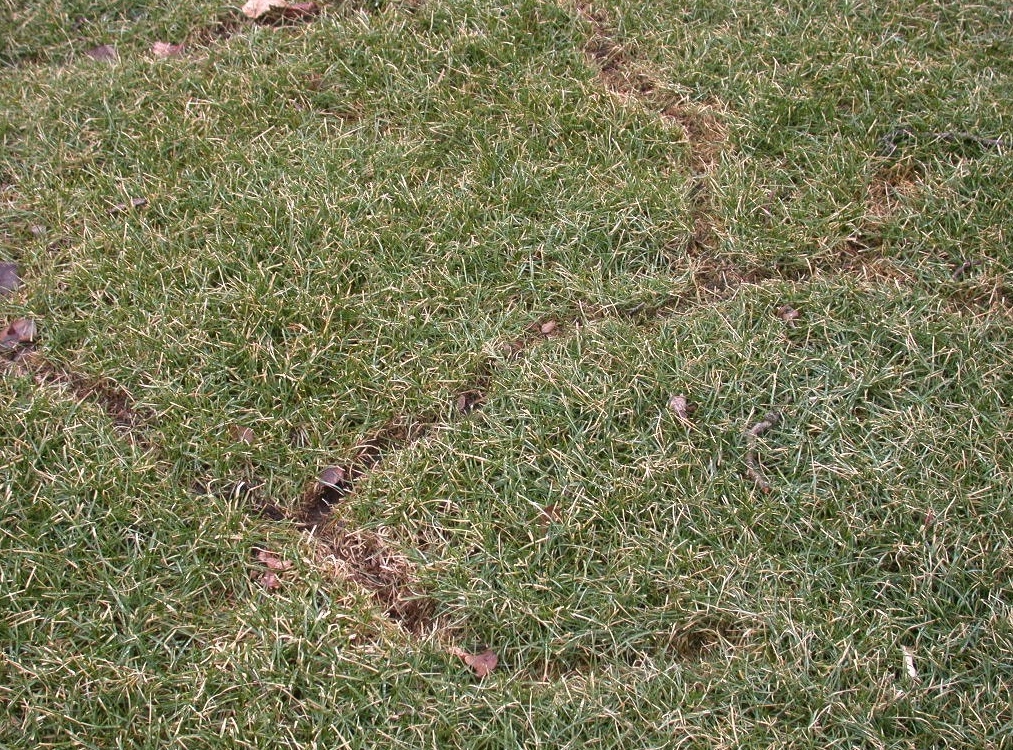
Photo: Dave Robson
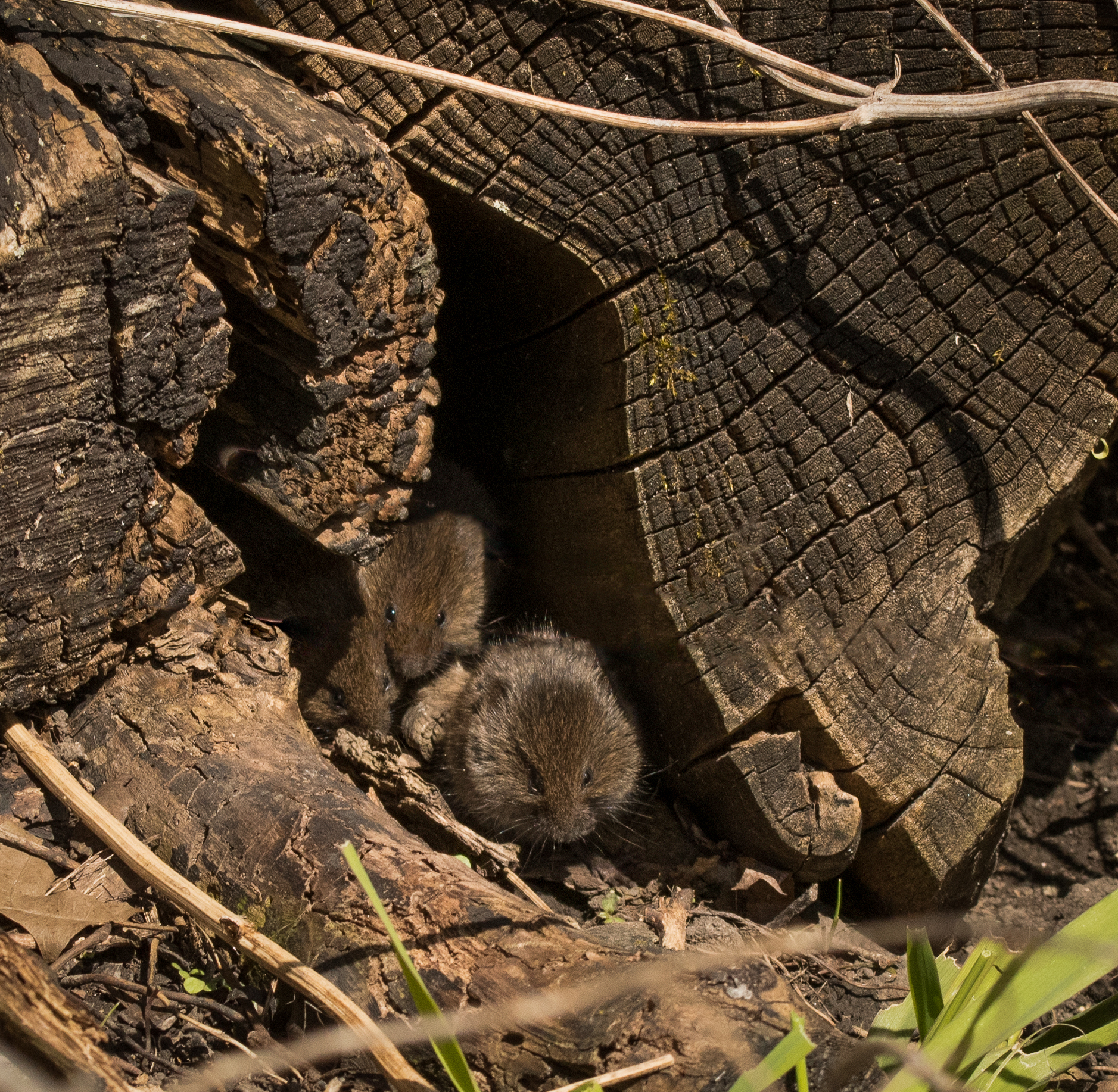
Photo: Sheila Newenham
The Wildlife Illinois website was authorized by the Illinois Department of Natural Resources (IDNR) in partial fulfillment of project W-147-T. The website was developed by the National Great Rivers Research and Education Center, 2wav, and the IDNR in partnership with the United States Department of Agriculture Animal and Plant Health Inspection Service Wildlife Services and University of Illinois Extension to provide research-based information about how to coexist with Illinois wildlife.